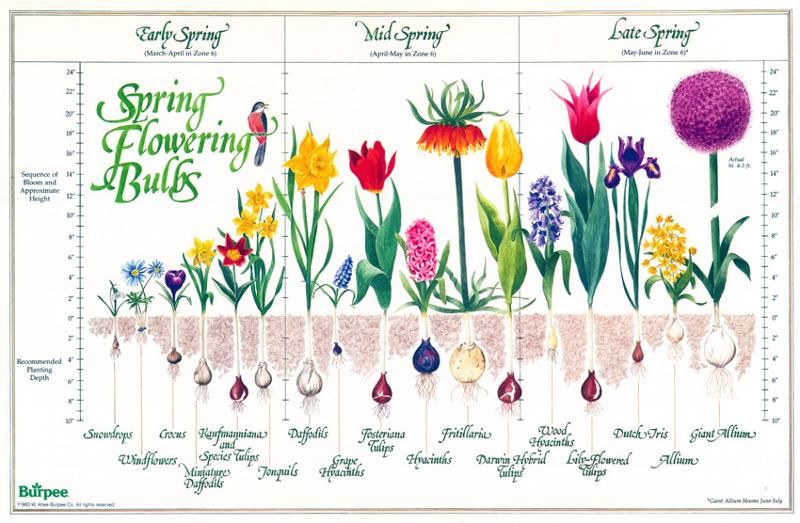To be successful, bulbs must be planted at the correct time of year

By Kate Russell

Kate Russell
The same conditions that make the South Bay one of the best places in the world for growing garlic also make it a great place for other flowering bulbs. And spring is a good time to plant many of those bulbs here in Morgan Hill. Dahlias and gladiolus are just the beginning.
Most bulbs are modified stems. In addition to bulbs, there are also flowering corms, rhizomes, and tubers. These plants have evolved to store food reserves in globe-shaped underground buds that are protected with overlapping, expanded leaf bases. Some bulb plants, such as onion and garlic, have a papery protective layer over these underground leaves, while scaly bulbs, such as the lily, have no protective layer. Bulbs can be as tiny as a pea or weigh as much as 15 pounds!
 Bulbs remain hidden during dormant months. When favorable weather occurs, they send shoots upward to absorb the sun’s energy. Bulbs use that energy to produce stunning flowers and to start storing food for the next dormant season. Once established, bulbs can provide years of low-maintenance flowers.
Bulbs remain hidden during dormant months. When favorable weather occurs, they send shoots upward to absorb the sun’s energy. Bulbs use that energy to produce stunning flowers and to start storing food for the next dormant season. Once established, bulbs can provide years of low-maintenance flowers.
Some bulbs are planted in autumn for spring and summer blooming, while others are planted in spring for summer and fall color. Spring plantings include Calla lilies, dahlia, gladiolus, naked lady lilies, ranunculus, pineapple lilies, saffron crocus, and red tiger flowers. In autumn, you can add tulips and daffodils to the landscape. Shasta daisies can be planted in spring or fall.
 To get the best results from your flowering bulbs, start with large, high quality bulbs. Bigger bulbs contain more food reserves to help your flowers grow big and strong. Then, select a spot with good drainage and at least six hours of sunlight each day. Prepare the planting area by incorporating aged compost to provide nutrients and improve drainage.
To get the best results from your flowering bulbs, start with large, high quality bulbs. Bigger bulbs contain more food reserves to help your flowers grow big and strong. Then, select a spot with good drainage and at least six hours of sunlight each day. Prepare the planting area by incorporating aged compost to provide nutrients and improve drainage.
To be successful, bulbs must be planted at the correct time of year. Spring planting should be done after the last frost date (March 15) through May. Fall plantings should be done in November and early December.
Plant bulbs two to three times deeper than the bulb is tall with the pointy end up.
 Select a variety of heights, colors, and bloom times. With a good plan, you can have lovely, colorful flowers practically all year.
Select a variety of heights, colors, and bloom times. With a good plan, you can have lovely, colorful flowers practically all year.
After planting, mulch the area and remove weeds as they appear. Water your bulbs well, allowing the soil to dry out between waterings. If squirrels decide your bulbs are on their menu, cover the area with hardware cloth until shoots begin to emerge. You can cover the wire with mulch to keep the bed attractive.
Spent blooms can be removed, but allow the bulb to reabsorb nutrients from the leaves before removing them.






